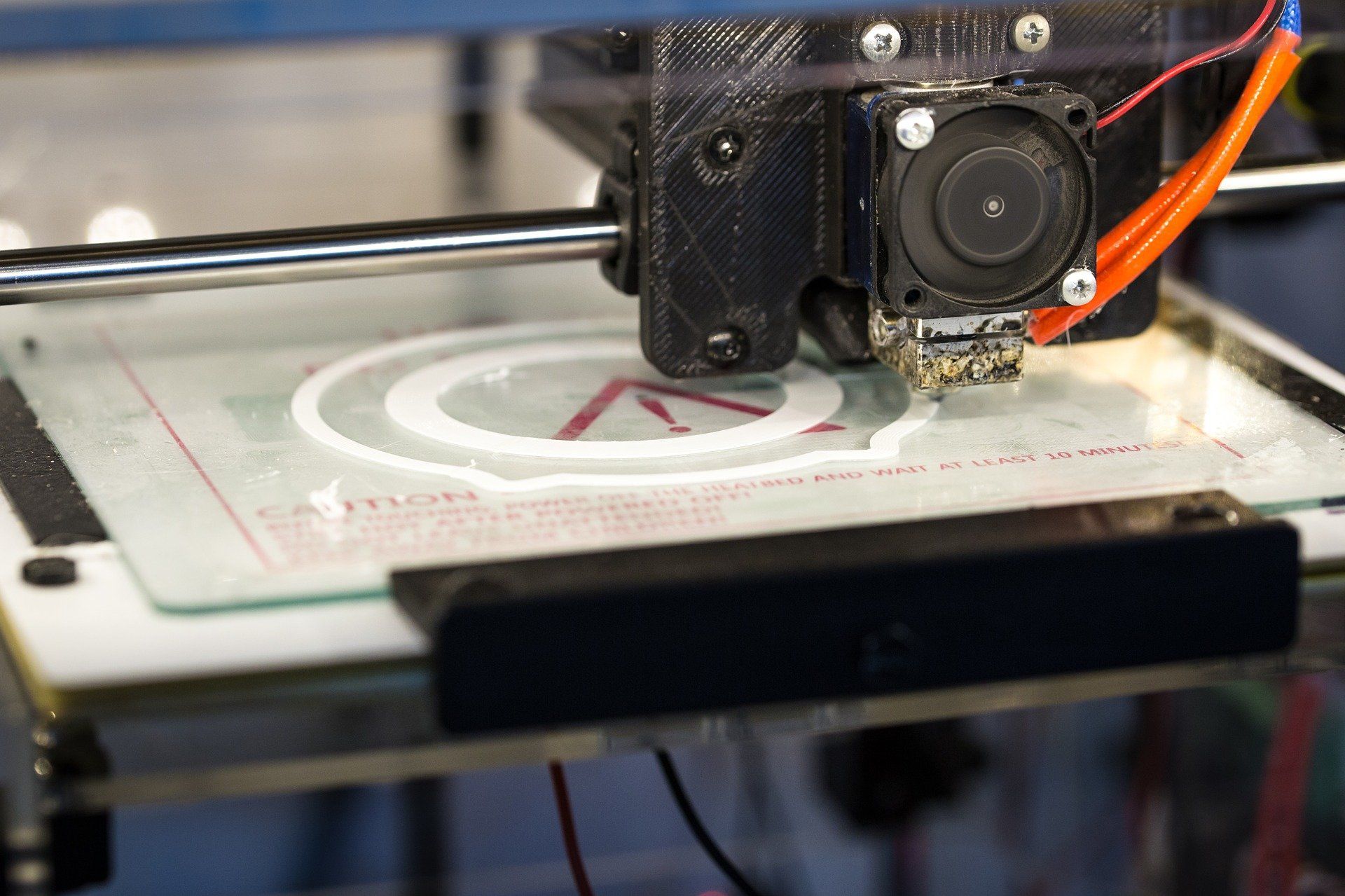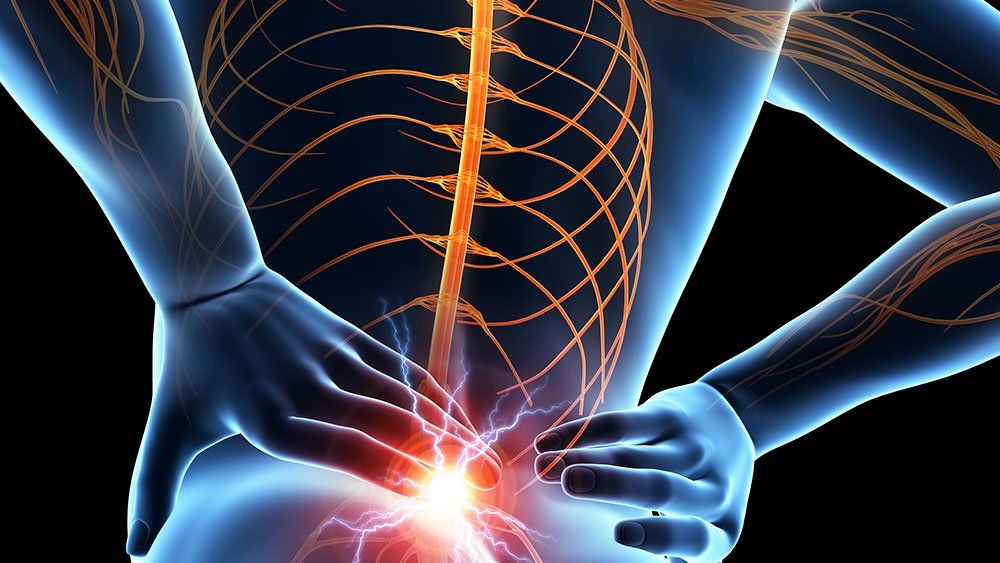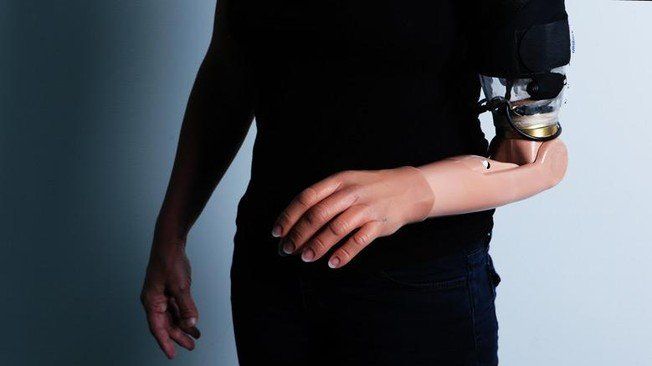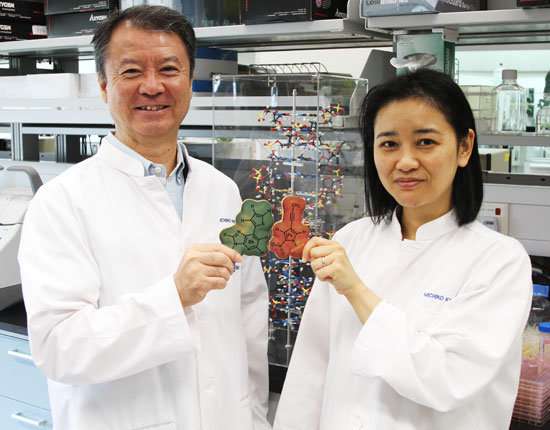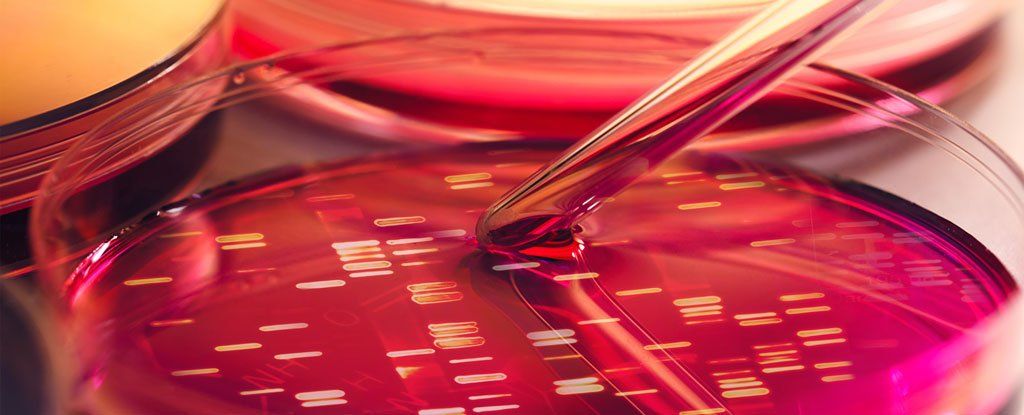Archive for the ‘biotech/medical’ category: Page 2365
Oct 28, 2017
3D printer makes first wearable ‘battery’
Posted by Saúl Morales Rodriguéz in categories: 3D printing, biotech/medical, mobile phones, sustainability, wearables
Imagine printing off a wristband that charges your smartphone or electric car with cheap supplies from a local hardware store.
That’s the direction materials research is heading at Brunel University London where scientists have become the first to simply and affordably 3D print a flexible, wearable ‘battery’.
The technique opens the way for novel designs for super-efficient, wearable power for phones, electric cars, medical implants like pacemakers and more.
Oct 28, 2017
How Electricity Could Replace Opioids In Treating Chronic Pain
Posted by Dan Kummer in category: biotech/medical
The neuromodulation market is poised to be worth $3.9 billion this year. It could also replace opioids in treating some forms of chronic pain.
Oct 28, 2017
Advanced artificial limbs mapped in the brain
Posted by Saúl Morales Rodriguéz in categories: biotech/medical, cyborgs, robotics/AI
EPFL scientists from the Center for Neuroprosthetics have used functional MRI to show how the brain re-maps motor and sensory pathways following targeted motor and sensory reinnervation (TMSR), a neuroprosthetic approach where residual limb nerves are rerouted towards intact muscles and skin regions to control a robotic limb.
Targeted motor and sensory reinnervation (TMSR) is a surgical procedure on patients with amputations that reroutes residual limb nerves towards intact muscles and skin in order to fit them with a limb prosthesis allowing unprecedented control. By its nature, TMSR changes the way the brain processes motor control and somatosensory input; however the detailed brain mechanisms have never been investigated before and the success of TMSR prostheses will depend on our ability to understand the ways the brain re-maps these pathways. Now, EPFL scientists have used ultra-high field 7 Tesla fMRI to show how TMSR affects upper-limb representations in the brains of patients with amputations, in particular in primary motor cortex and the somatosensory cortex and regions processing more complex brain functions. The findings are published in Brain.
Targeted motor and sensory reinnervation (TMSR) is used to improve the control of upper limb prostheses. Residual nerves from the amputated limb are transferred to reinnervate and activate new muscle targets. This way, a patient fitted with a TMSR prosthetic “sends” motor commands to the re-innervated muscles, where his or her movement intentions are decoded and sent to the prosthetic limb. On the other hand, direct stimulation of the skin over the re-innervated muscles is sent back to the brain, inducing touch perception on the missing limb.
Continue reading “Advanced artificial limbs mapped in the brain” »
Oct 28, 2017
Getting to and living on Mars will be hell on your body
Posted by Klaus Baldauf in categories: bioengineering, biotech/medical, space travel
While NASA and SpaceX figure out how to get to Mars, they’re also thinking about how the 200-day journey and life on the red planet will affect humans. Astronauts will be dealing with nasty things like muscle atrophy and bone loss, intra-cranial pressure, psychological issues, lack of resources and long-term radiation exposure. NASA and its partners are working on things like “torpor,” a type of space hibernation, and protective Mars cave dwellings with a view. To learn more, Engadget spoke with NASA scientist Laura Kerber and Spaceworks COO John Bradford at the Hello Tomorrow symposium in Paris.
“There are a lot of challenges that are preventing us from even getting there in a healthy state,” said Bradford in a keynote speech at the event. As a human-space-exploration expert, he’s been working on a way to mitigate many of those problems by putting astronauts in a “torpor state” of prolonged hypothermia. It not only reduces the human problems but helps with technical and engineering challenges, too.
On the medical side, it addresses the so-called psycho-social challenges (you can’t get depressed if you’re asleep), reduces intra-cranial pressure, opens up new approaches like electrostimulation to reduce muscle atrophy and bone loss, and even helps minimize radiation exposure.
Continue reading “Getting to and living on Mars will be hell on your body” »
Oct 27, 2017
Researchers create new ‘letters’ to enhance DNA functions
Posted by Ian Hale in categories: bioengineering, biotech/medical, genetics, nanotechnology
Just like how letters are strung together to form words, our DNA is also strung together by letters to encode proteins. The genetic alphabet contains only 4 natural letters — A, C, G and T, which hold the blueprint for the production of proteins that make our bodies work. Now, researchers from the Institute of Bioengineering and Nanotechnology (IBN) of the Agency for Science, Technology and Research (A*STAR) have created a DNA technology with two new genetic letters that could better detect infectious diseases, such as dengue and Zika.
Genetic alphabet expansion technology is the introduction of artificial base pairs into DNA. The existing four genetic letters are naturally bound together in base pairs of A-T and G-C. These specific base pair formations are essential in DNA replication, which occurs in all living organisms. It is the process by which a DNA molecule is duplicated to produce two identical molecules.
“The expansion of the genetic alphabet is a significant scientific achievement. It sheds insights into DNA’s natural replication mechanism, which will help us to design unique DNA molecules and technologies. For example, our technology can be used to create novel diagnostics and therapeutic agents with superior efficacy,” said IBN Executive Director Professor Jackie Ying.
Oct 26, 2017
The Nootropics Community Is Using 23andMe to Match Smart Drugs to Their DNA
Posted by Ian Hale in categories: biotech/medical, genetics, neuroscience
There are multiple software options that analyze your genetic data and make recommendations on which supplements you should be taking.
Oct 26, 2017
Rejuvenation May Bring Challenges to Society but are they Worse than Age-related Diseases?
Posted by Steve Hill in categories: biotech/medical, life extension
Defeating age-related diseases may create challenges for society, but is that worse than not doing anything?
In these six years, I’ve spent as a rejuvenation advocate, I’ve had to deal with the traditional objections raised against the idea of longer lifespans. These objections touch a variety of different topics, but they aren’t terribly many: we’re talking about maybe a dozen of them, and these days, I hardly ever hear an objection I haven’t discussed before.
However few or many, and deserving of specific answers, these objections may be, they can all be reduced down to a single, general form: “Rejuvenation biotechnologies would cause [insert problem here], so it’s best not to go there.” And just like there are specific answers for each specific objection, there are general answers for their general form—Aubrey de Grey’s famous “two more general answers”.
Oct 26, 2017
Scientists working toward reversible kind of gene editing
Posted by Montie Adkins in categories: bioengineering, biotech/medical, genetics
Scientists are altering a powerful gene-editing technology in hopes of one day fighting diseases without making permanent changes to people’s DNA.
The trick: Edit RNA instead, the messenger that carries a gene’s instructions.
“If you edit RNA, you can have a reversible therapy,” important in case of side effects, said Feng Zhang of the Broad Institute of MIT and Harvard, a gene-editing pioneer whose team reported the new twist Wednesday in the journal Science.
Oct 25, 2017
New Algorithm Could Let Us Reprogram Any Cell Into Any Other Cell Type
Posted by Shailesh Prasad in categories: biotech/medical, information science
One of the most defining scientific discoveries in recent decades is the development of induced pluripotent stem cells, which lets scientists revert adult cells back into an embryonic-like blank state and then manipulating them to become a particular kind of tissue.
But now a new model could do away with this time-consuming process, taking out the middle step and directly programming cells to become whatever we want them to be.
“Cells in our body always self-specialise,” explains bioinformatics researcher Indika Rajapakse from the University of Michigan.
Continue reading “New Algorithm Could Let Us Reprogram Any Cell Into Any Other Cell Type” »

